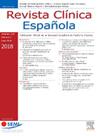斑疹伤寒与阿尔茨海默病的关系:Framingham研究数据
IF 1.7
4区 医学
Q2 MEDICINE, GENERAL & INTERNAL
引用次数: 0
摘要
甘油三酯-葡萄糖(TyG)指数是由空腹血糖和甘油三酯水平综合得出的,是胰岛素抵抗的可靠指标。先前的研究已经建立了胰岛素抵抗与阿尔茨海默病(AD)之间的重要联系。然而,TyG指数的变化轨迹与AD发病之间的关系尚不清楚。方法这项纵向前瞻性队列研究的数据来自弗雷明汉心脏研究后代队列。共有2170名基线时无AD的参与者被纳入研究,并被前瞻性随访至2018年。通过应用潜在类别增长混合模型分析,确定具有可比TyG指数轨迹的参与者组。结果163名参与者在随访期间被诊断为AD。低、中、高轨迹组AD的发病率分别为0.38、0.66和0.68 / 100人年。与低轨迹组相比,中等轨迹组(风险比[HR] 1.53, 95%可信区间[CI]: 1.04-2.25)和高轨迹组(HR = 1.90, 95% CI: 1.09-3.31)均表现出较高的AD发病风险。在调整多个协变量后,这些结果保持一致(中度:HR = 1.53, 95% CI: 1.02-2.29;高:HR = 1.84, 95%置信区间CI: 1.03 - -3.27)。结论较高的TyG指数轨迹与AD的发展有显著的相关性。对AD高危人群的TyG指数进行早期持续监测有助于及时采取预防措施。本文章由计算机程序翻译,如有差异,请以英文原文为准。
Relación entre las trayectorias del TyG y la enfermedad de Alzheimer: datos del Estudio de Framingham
Background
The triglyceride-glucose (TyG) index is derived from a combination of fasting plasma glucose and triglyceride levels, making it a reliable indicator of insulin resistance. Prior studies have established a significant connection between insulin resistance and Alzheimer's disease (AD). Nevertheless, the relationship between the trajectory of the TyG index and AD onset is still not clearly understood.
Methods
This longitudinal prospective cohort study derived data from the Framingham Heart Study Offspring cohort. A total of 2,170 participants without AD at baseline were included and were prospectively followed until 2018. Groups of participants with comparable TyG index trajectories were identified through the application of latent class growth mixture modeling analysis.
Results
A cohort of 163 participants were diagnosed with AD during the follow-up. The incidence of AD in the low, moderate, and high trajectory groups was 0.38, 0.66, and 0.68 per 100 person-years respectively. Compared to the low trajectory group, both the moderate trajectory (hazard ratio [HR] 1.53, 95% confidence interval [CI]: 1.04-2.25) and high trajectory groups (HR = 1.90, 95% CI: 1.09-3.31) exhibited an elevated risk of developing AD. These results remained consistent after adjusting for multiple covariates (moderate: HR = 1.53, 95% CI: 1.02-2.29; high: HR = 1.84, 95% CI: 1.03-3.27, respectively).
Conclusion
Higher TyG index trajectories exhibit a notable correlation with the development of AD. Early and continuous monitoring of the TyG index in individuals identified as high-risk for AD may help implement timely prevention measures.
求助全文
通过发布文献求助,成功后即可免费获取论文全文。
去求助
来源期刊

Revista clinica espanola
医学-医学:内科
CiteScore
4.40
自引率
6.90%
发文量
73
审稿时长
28 days
期刊介绍:
Revista Clínica Española published its first issue in 1940 and is the body of expression of the Spanish Society of Internal Medicine (SEMI).
The journal fully endorses the goals of updating knowledge and facilitating the acquisition of key developments in internal medicine applied to clinical practice. Revista Clínica Española is subject to a thorough double blind review of the received articles written in Spanish or English. Nine issues are published each year, including mostly originals, reviews and consensus documents.
 求助内容:
求助内容: 应助结果提醒方式:
应助结果提醒方式:


